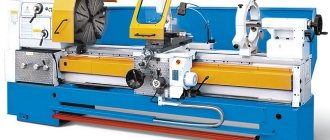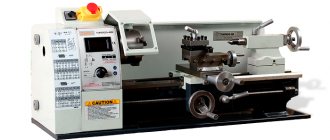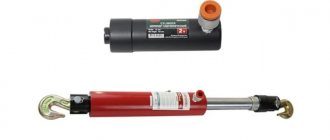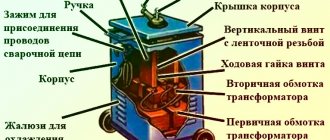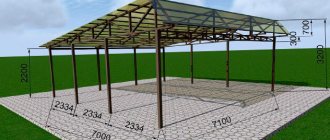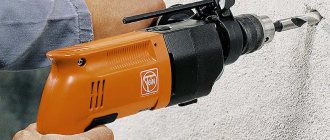5670 0 1
Icer April 27, 2018Specialization: master in the construction of plasterboard structures, finishing work and laying floor coverings. Installation of door and window units, finishing of facades, installation of electrical, plumbing and heating - I can give detailed advice on all types of work.
Today we will figure out how to make your closet more convenient to use using a device such as a pantograph. This is a special system that allows you to raise and lower the bar under the hangers at the moment you need. Thanks to this design, compartments with clothes can be located in the upper part of the closet, freeing up space below for shelves.
Pantograph is a very convenient element in modern clothing storage systems
Features and types of designs
Let us analyze the design in detail, since it is unfamiliar to most of the population.
Pantograph design
Any system of this type consists of several components:
Classic design option
- Side levers . The main load-bearing elements that support the weight of clothing and must be rigid so as not to deform when the structure is raised and lowered;
- Sliding rod . There are hangers with clothes on it. In order not to select a separate size for a niche, the rod is made extendable to change the length. The possible size range is always indicated on the packaging, do not forget to check this aspect when purchasing;
- Fixing elements . With their help, the structure is attached to the walls of the cabinet. They must be strong and wear-resistant; if there is anything to break in the product, it is the fixing units;
- Lifting mechanism . It consists of two parts, which are located where the structure is attached to the cabinet walls and are hidden by plastic covers. Responsible for the easy descent and ascent of the pantograph and must be of high quality in order to last a long time;
- Lever. Available in mechanical models and needed for lowering and raising the structure.
The system is used in wardrobes, as they are made to order and you select the contents. But there are also ready-made models that include a pantograph. One closet can contain two or more similar elements at once, it all depends on the layout and the amount of clothing that needs to be placed.
Cabinet with two pantographs
The principle of operation is simple: when you pull down on the rigid handle, it lowers. And, conversely, push the crossbar up - and it will smoothly rise and lock in the upper position.
Kinds
There are currently two types of pantographs on sale: mechanical and electrical. Let's look at each option separately.
Mechanical models have the following features:
- The system operates using springs that have a certain rigidity. Depending on them, the carrying capacity of one element varies in the range from 10 to 20 kg, you need to select a model according to the weight of things, for outerwear it is better to use more powerful options;
- The design is easy to install and operate . The kit always includes instructions with diagrams of fastening and location of holders in the cabinet. No additional settings or adjustments are needed; after installation, you can use the pantograph;
- Variable rod length . Typically the range is from 450mm to 1250mm, which is sufficient for most cabinets. The length changes quickly, the element is easily fixed in the required position;
- Low cost . The price starts from 2000 rubles, so this option is very popular.
To lower the structure, you need to pull the handle down
Electric drive options have the following features:
- Ease of use. There is no need to pull the handle, just press the button and the crossbar will smoothly lower down. This is especially convenient if there is a lot of clothing hanging on the pantograph and the load on the structure is high;
- Various control options . There are two main types of systems, the first is controlled by a button, which is connected by wire to the control unit, and the second operates from a remote control. Of course, the remote control is more convenient to use, but such a kit will also cost more. On average, the price starts from 8,000 rubles and can even reach tens of thousands;
Elevator mechanism operated by remote control
- Installation must be carried out by a qualified specialist . If you do not understand electrics, then it is better to hire a professional to do the work so as not to damage the expensive electric drive.
Advantages and disadvantages
Each product has its pros and cons; as for the pantograph, its main advantages are as follows:
| Illustration | Description |
| Ease of use . To find the thing you need and get it out, you don’t have to rummage through the entire closet; the crossbar slides out to the side - and everything on it is easily accessible. This greatly simplifies the process of use, because hanging things is much easier due to the fact that the crossbar is located behind the cabinet and is at a low height. | |
Clothes are well ventilated. Thanks to this, the smell of dampness and mustiness does not appear in the closet.
| |
| Convenient for the elderly and people with disabilities . Now they can easily lower the bar to the desired level, making the cabinet easier to use. For them, you can install a pantograph even in low compartments, so that the clothes fall low and you don’t have to raise your arms. | |
| Things remain attractive . When you hang them, they do not wrinkle and even straighten out naturally. Ironing takes much less time. Plus, you can iron your clothes and hang them on a rail, they won’t wrinkle and will maintain their perfect appearance. |
The design also has disadvantages:
- Moving parts wear out over time . First, this leads to the appearance of play in the structure, and over time it completely fails. It is most often impossible to repair a single unit; you have to replace the entire system. An ordinary rod has no service life at all, since it is rigidly attached to the cabinet walls;
- Creaking often occurs during use . This is especially noticeable if the pantograph is located in the bedroom and one of the family members needs to take clothes in the morning. The noise may wake up sleepers;
- High price . If you compare it with a regular barbell, which costs hundreds of rubles, the difference is tens of times. This is not a budget solution, but if convenience is important to you, then the cost is worth it;
- Difficult installation . Installing the system is not very difficult, but if you compare it with a stationary boom, the process is much more complicated and takes many times more time.
Milling and copying equipment: areas of application
What is a pantograph for a sliding wardrobe?
On milling copying machines you can process not only flat, but also three-dimensional parts. With their help, along with simple milling operations, you can perform engraving, repeat drawings, patterns and inscriptions. The design of the machine is quite simple, and any craftsman can make it.
Copy-milling machines allow you to process not only wooden parts, but also cast iron, steel and plastic workpieces, as well as products made of non-ferrous metals. This is ensured by high-quality tools made of high-speed steel and hard alloys. The copying machine allows you to mill not only straight, but also curved surfaces. In this case, the details are completely identical.
How to choose the right one
When choosing a specific model, pay attention to the following aspects:
- Material of manufacture . The most common options are made of chromed steel; they are durable, but over time the coating can wear out and the appearance deteriorates. Another solution is aluminum; this type of product is much lighter, but it also wears out faster. Pay attention to the plastic parts, they should not be too soft;
- Type of lifting mechanism . If the weight of the clothes that will be stored is large, then it makes sense to purchase a reinforced version with a load capacity of 20 kg or even more. And choose not a spring mechanism, but a gas one, in which two shock absorbers do the work; they provide a softer ride of the system;
- Manufacturer . There are plenty of resources on the Internet with reviews of products from different companies. It is better to look for relevant resources and get acquainted with the opinions of those who are already using the model you have chosen;
The drawing, which is on the label of each product, will tell you its main characteristics and dimensions
- Control type . Manual options are much cheaper, but electric ones are more convenient to use. What to choose is up to you, it all depends on the costs you can afford;
- Dimensions and parameters . Three indicators are important: the length of the rod, it must fit the compartment; permissible load (it is better to take the system with a reserve so as not to overload the pantograph and thereby not reduce its service life); the difference between the positions of the rod in the raised and lowered state - check how much it lowers and how far it extends outside the cabinet;
- Durability of the device . It all depends on the material of manufacture and the build quality of the structure. Another sign of quality is the warranty period; the longer it is, the stronger the product.
For narrow compartments, systems are used with fastening on one side of the furniture, their maximum load capacity is 5 kg
Completion of work
The next step is to assemble the copying mechanism for the router. To do this, you need to prepare the following components:
Rulers should be made of plexiglass or plastic, their thickness should be 4-5 mm. You can also use plexiglass as a material for making rulers. Next, the marking of these linear parts is carried out. This process should be approached very carefully, since the slightest error in dimensions can lead to incorrect operation of the pantograph.
https://youtube.com/watch?v=g0binzQzcGg
Holes are drilled on the marked markings. In this case, their alignment must be maintained. To achieve this, you need to put all the rulers together and drill holes in them at the same time.
Then you need to insert brass bushings into the prepared holes. When installing them, a slight tension should be observed: this will help the bushings to stay more tightly in the rulers. In order to secure the axial parts in the bushings, you need to make special clamps. They can be made from hardened steel wire, the diameter of which should be 1-1.5 mm.
Then the boss is assembled. Blind holes are made in its lower part, which can be punched with a core. The nails must be installed in such a way that they protrude from the body of the boss by 2-3 mm.
Having prepared all the necessary parts of the pantograph, they are assembled.
During this process, you need to ensure that all moving parts move smoothly and easily.
https://youtube.com/watch?v=SVsRQZG4HDc
In this case, all prepared holes should be marked. According to this marking, you can scale the manufactured copy of the part.
Make it for school
Pantograph
This simple drawing device can be used to redraw plans, drawings, geographical maps or decorative elements, increasing or decreasing their scale by 1.5, 2 and 3 times.
The device is a parallelogram formed by four planks - two long and two short, made of well-planed hardwood (oak, beech or birch). The planks are connected to each other with screws and nuts
Pay attention to the screw (view B) - it is of an unusual type. With its lower rounded head it rests on the table surface, thus unloading node A, with which the pantograph is attached to the lid
If the device is used to obtain a copy on an enlarged scale, a guide pin is fixed in node B - it can be a blunt nail clamped into a collet pencil, and a regular pencil, felt-tip pen or ballpoint pen is fixed in node B. By tracing the lines of the original with a pin, we will obtain a copy of the specified magnification scale on paper. To obtain a copy in a reduced form, the guide pin and the writing instrument are swapped. To select the scale, holes are provided in the long and short bars and a digital designation is entered, the ratio of reduction or increase.
Clamping pins are most easily made from a piece of rubber in the form of flat washers. The holes in the washers should be cut so that the collet pencil and writing instrument fit tightly into it.
A clamp is provided to secure the device to the workbench. It must be made from a steel plate 1.5 mm thick. To prevent the clamp from scratching the table top, cut a 2 mm thick rubber gasket under it. There is a hole on the upper plane of the clamp into which the pantograph axis is inserted. As you can see, there is no bearing here. Therefore, to reduce friction between parts, install washers.
In the figure, the numbers indicate: 1 - clamp, 2 - rubber gasket, 3 - table cover, 4 - long strap, 5 - short strip and 6 - rubber clamps.
Pantograph
Pantograph current collectors have a lifting mechanism in the form of a hinged multi-link. They are used on electric rolling stock of mainline railways and trams. Such current collectors are designed for current collection at high speeds. The pantograph current collector (Fig. 1) has movable frames connected by levers to a fixed base. On the upper frames there are one (usually on DC electric locomotives) or two runners equipped with contact inserts, which slide along the contact wire when the electric rolling stock moves. The pantograph is moved to the working position by a pneumatic drive installed on the base of the pantograph or on the roof of the electric rolling stock. The current collector is raised by springs when compressed air is supplied to the pneumatic cylinder and lowered when air is released. The pressure in the pneumatic cylinder is maintained throughout the entire operating time of the electric rolling stock. Some current collectors are equipped with automatic devices for lowering them when the skid hits a faulty element of the contact network, which ensures localization of the damage that has occurred.
Pantographs on high-speed electric rolling stock are sometimes made in the form of two moving systems (Fig. 2) using auto-regulation: only the upper system reacts to small changes in the height of the contact wire suspension, and with large changes (for example, in the area of low artificial structures) the upper moving system activates the lower one. To improve the quality of current collection, hydraulic shock absorbers and aerodynamic screens are installed on these current collectors.
| Electric train pantograph ED4M | Rice. 1. Pantograph current collector: 1 - base; 2 - carriage; 3 - runner; 4 - upper frame; 5 - lower frame. | Rice. 2. Auto-adjustable current collector: 1 - movable frame of the lower system; 2 - main shaft of the upper system; 3 — movable frame of the upper system; 4 — runner. |
Ancestor
Like many other objects, the pantograph has a “parent”. It was Christophe Scheiner. He was a German astronomer, physicist, mathematician and mechanic. At one time he joined the Jesuit Order.
Initially, Sheiner became famous in astronomy, and then in other sciences. He became the inventor of many useful devices. For example, he worked on a telescope with two convex glasses, based on Kepler's developments. He also created two drawing tools: a device for drawing conic sections and a pantograph. This discovery was largely fundamental for the development of other similar mechanisms.
How to install a pantograph for clothes with your own hands and avoid making mistakes
Directly attaching a pantograph for clothes to a closet is extremely simple and straightforward; just follow the recommendations in the instructions.
It is important to maintain alignment and clear symmetry when attaching the base to the sides. The slightest misalignment negatively affects both the service life of the mechanism and the comfort of operation.
According to the instructions, first measure the fastening of the side mechanisms at the expected level of lowering of the clothing pantograph. Most often they are attached using 3x16 self-tapping screws, which are included in the kit.
Then the side posts of the mechanism are lowered and a horizontal crossbar, already assembled with a handle, is screwed to them, which will serve as a bar for clothes.
At first, the movement of a pantograph without hangers will be “tight”, with the need to make efforts to lower it. But over time, under the weight of the clothing, it will develop and become smooth and comfortable.
Transformation mechanism for the sofa “Pantograph” (“Tick-tock”, “Puma”, “Walking Eurobook”)
The story with the “Pantograph” is the same as with the “Tango” sofas. Apparently, for the sake of catchphrase, sellers and manufacturers came up with a number of bright names for essentially the same mechanism. So, what else did we manage to find under the guise of a “Pantograph” - “Tick-tock”, “Puma” and even “Walking Eurobook”. To avoid confusion, I will further call the mechanism “Pantograph” (it sounds somehow solid and mysterious))) . The “Pantograph” arose as a variant of the “Eurobook” mechanism. The difference is that the “pantograph” does not have roll-out rollers. Otherwise, it has similar parameters to the “Eurobook”. It is equipped with internal niches for storage, and has a large and flat sleeping area.
The principle of operation of the mechanism: To unfold it, just pull the sofa seat up, grasping its edge in the middle. Often sofas are equipped with hinges - handles for ease of unfolding. By pulling the sofa seat up, you activate its mechanism, which pushes the seat up and forward and at the same time opens the legs of the support and stands on them. The back cushion is placed in the resulting niche. The result is a flat, without visible joints, place for two people to sleep.
Advantages: sofas with “Pantograph” have a comfortable place to sleep. The mechanism is easy to unfold. Such a sofa will not spoil your floor covering because when unfolded, parts of the sofa do not move on the floor.
Disadvantages: the mechanism is expensive because of this and the cost of the sofa becomes higher. Due to the wide seat, it is not comfortable to sit on the sofa; you need to use additional pillows
Furniture
The next version of the concept under consideration is also universal. It is used in various furniture. A clothing pantograph is a closet fixture. It began to appear especially often with the advent of sliding wardrobes.
Of course, it is not immediately clear what we are talking about. Only those who have acquired high closets, from where it is difficult to get clothes, can guess. So, in this case, the pantograph is a U-shaped device that helps you reach dresses and suits with one movement.
In addition, this mechanism is often used to save space. This is especially important when buying or ordering a cabinet for a small room, where every centimeter is worth its weight in gold.
The advantage of this device is that you can very quickly get things out of the depths of the closet by lowering the bar to eye level. Hangers with seasonal dresses and suits change so quickly. Special lighting can be provided with the pantograph. It all depends on the size of the furniture.
conclusions
Now you know everything about furniture pantographs and can choose and install this mechanism in your closet yourself. Let's summarize the article:
- pantograph simplifies access to the upper sections of the cabinet;
- There are mechanical and electrical models;
- You can install the device yourself;
- Convenience and ergonomics are compensated by the high price.
An ingenious engineering design solved the problem of operating tall wardrobes without mezzanines. It is very easy to get any item from your wardrobe if you have a pantograph. Take advantage of modern solutions.
Hello, dear readers! It has happened that when you are getting ready for work in a hurry, you open the closet and cannot find the necessary thing, because... Although it is neatly folded, it lies in the far corner of the closet, and even on the top shelf, which is impossible to get out without improvised means. On our website you will learn about one device in the closet that will change your outlook on using familiar furniture. Of course, we will talk about such know-how of human thought as the pantograph.

